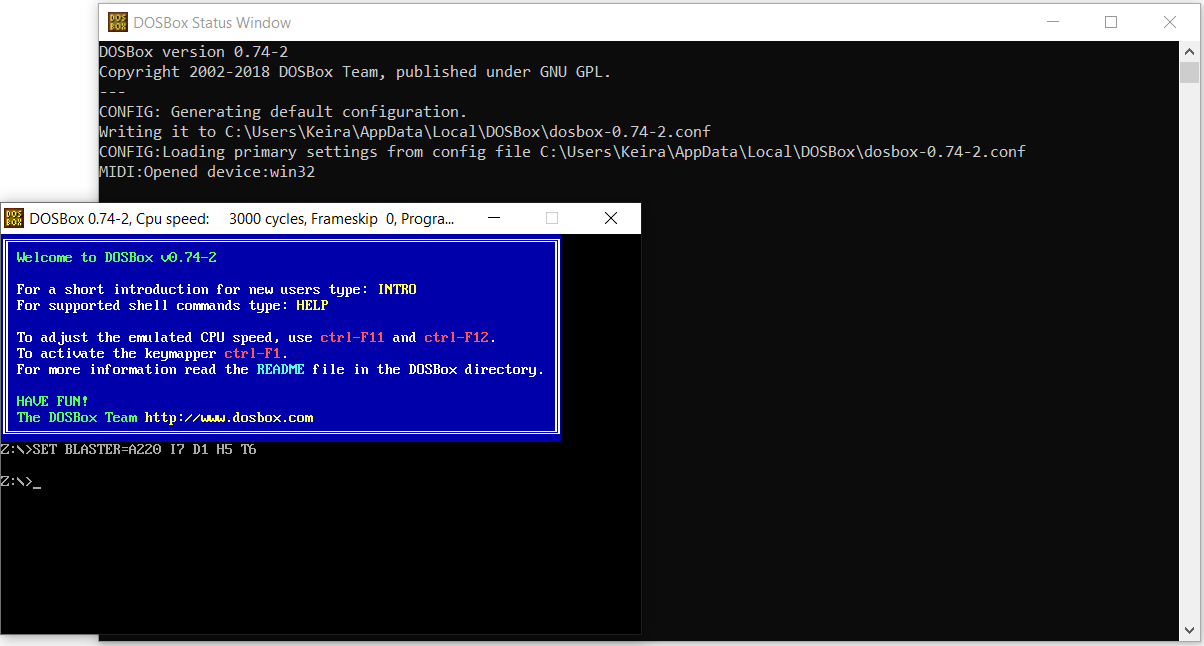Article 1st update: 2021, Article 2nd update: 2022
The term “Data Science” was coined in 2008 by statisticians, and since then, it has become one of the most popular and hottest career paths in the 21st century.
Its popularity is due to the rapid growth of data in various industries and the need for data-driven decision-making. Data science involves using multiple tools, techniques, and programming languages to extract insights from large and complex data sets. In addition, data scientists work on analyzing data and building predictive models to help businesses make informed decisions.
The demand for data scientists has been increasing over the years and is expected to grow further. Based on the US Bureau of Labor Statistics report, the employment of data scientists is projected to grow 31% from 2019 to 2029, which is a lot faster than the average for all occupations.
Apart from the high demand, data science also offers a high salary and a wide range of career opportunities. Data scientists can work in various industries, such as healthcare, finance, retail, and technology. They can also specialize in different areas, such as machine learning, data visualization, and data engineering.
In 2012, the Harvard Business Review published an article labeled data scientist as the “Sexiest Job of the 21st Century.” The report was based on analyzing data from various job boards and concluded that data scientists were in high demand and short supply. However, the article also argued that data scientists were well-paid and were working on exciting projects, which made the job more attractive.
The article identified several reasons why data science has grown into one of the sexiest jobs of the 21st century. One reason is the growth of data. With the advent of digital technologies, the amount of data generated has increased significantly, and businesses need skilled professionals who can analyze and make sense of this data.
Another reason is the availability of big data technologies, such as Hadoop and NoSQL databases. These technologies have made it possible to store and process large amounts of data, opening up new opportunities for data analysis and decision-making.
The article also noted that data science is a multidisciplinary field requiring diverse skills, including statistics, machine learning, programming, and domain knowledge. In addition, data scientists need to work with large data sets, build predictive models, and communicate their findings effectively to different stakeholders. This combination of skills makes the job challenging and intellectually stimulating.
The article concluded that data science is an exciting and rewarding career path that offers high salaries, job satisfaction, and a wide range of opportunities for growth and development. Since its publication, the term “data scientist” has become increasingly popular, and data science has become a mainstream field with a growing number of educational programs, training courses, and certifications.
Is Data Science really the Sexiest Job in the 21st century?
Data science is tagged as the sexiest job in the 21st century due to several factors. Here are some of the reasons why data science has become so popular and attractive:
- High demand: The demand for data scientists has steadily increased in recent years due to data growth in various industries. The ability to extract insights and knowledge from large and complex data sets has become critical for businesses in making informed decisions. This high demand has resulted in a shortage of qualified professionals, making data science a lucrative and competitive career.
- High salary: Data science is among the highest-paying professions, ranging from $90,000 to over $200,000 per year. The demand for skilled data scientists has created a competitive job market where companies are willing to pay top dollar for talent.
- Exciting projects: Data science involves working on exciting and innovative projects that impact businesses and society. Data scientists work on cutting-edge technologies such as artificial intelligence, machine learning, and deep learning, which have the potential to revolutionize our lives and work.
- Multidisciplinary: Data science requires a diverse set of skills, including statistics, programming, data visualization, and domain knowledge. Data scientists must work with large and complex data sets, build predictive models, and communicate their findings effectively to stakeholders. This combination of skills makes data science a challenging and intellectually stimulating profession.
- Wide range of career opportunities: Data scientists can work in various industries such as healthcare, finance, retail, and technology, among others. They can also specialize in different areas, such as machine learning, data visualization, and data engineering, which provides a wide range of career opportunities.
Let us look at the economic value of Data Science.
- The global big data and business analytics market is expected to reach $274.3 billion by 2022, with a CAGR of 13.2% from 2017 to 2022, according to a report by IDC.
- The data analytics outsourcing market is expected to reach $10.41 billion by 2026, with a CAGR of 21.1% from 2018 to 2026, according to a report by Transparency Market Research.
- The global predictive analytics market is expected to reach $14.95 billion by 2023, with a CAGR of 21.6% from 2018 to 2023, according to a report by MarketsandMarkets.
- The global location analytics market is expected to reach $22.8 billion by 2026, with a CAGR of 15.1% from 2020 to 2026, according to a report by ResearchAndMarkets.
- The global data quality tools market is expected to reach $1.28 billion by 2023, with a CAGR of 16.5% from 2018 to 2023, according to a report by MarketsandMarkets.
- The global data governance market is expected to reach $4.25 billion by 2023, with a CAGR of 22.0% from 2018 to 2023, according to a report by MarketsandMarkets.
- The global data catalog market is expected to reach $620.0 million by 2023, with a CAGR of 24.2% from 2018 to 2023, according to a report by MarketsandMarkets.
- The global data monetization market is expected to reach $7.90 billion by 2022, with a CAGR of 17.1% from 2017 to 2022, according to a report by MarketsandMarkets.
- The global data discovery market is expected to reach $10.66 billion by 2023, with a CAGR of 18.7% from 2018 to 2023, according to a report by MarketsandMarkets.
- The global data masking market is expected to reach $767.0 million by 2023, with a CAGR of 15.0% from 2018 to 2023, according to a report by MarketsandMarkets.
- The global data analytics outsourcing market is expected to reach $8.4 billion by 2022, with a CAGR of 29.4% from 2017 to 2022, according to a report by Technavio.
- The global data visualization market is expected to reach $9.45 billion by 2025, with a CAGR of 9.2% from 2020 to 2025, according to a report by MarketsandMarkets.
- The global location-based services market is expected to reach $157.34 billion by 2026, with a CAGR of 26.1% from 2018 to 2026, according to a report by Transparency Market Research.
- The global data analytics market is expected to reach $132.9 billion by 2022, with a CAGR of 33.2% from 2016 to 2022, according to a report by Allied Market Research.
- The global data integration market is expected to reach $18.62 billion by 2023, with a CAGR of 12.9% from 2018 to 2023, according to a report by MarketsandMarkets.
- The global data-wrangling market is expected to reach $4.29 billion by 2025, with a CAGR of 20.5% from 2020 to 2025, according to a report by MarketsandMarkets.
- The global data classification market is expected to reach $336.4 million by 2023, with a CAGR of 25.4% from 2018 to 2023, according to a report by MarketsandMarkets.
- The global predictive maintenance market is expected to reach $10.7 billion by 2025, with a CAGR of 37.6% from 2020 to 2025, according to a report by MarketsandMarkets.
- The global data virtualization market is expected to reach $9.07 billion by 2023, with a CAGR of 21.1% from 2018 to 2023, according to a report by MarketsandMarkets.
- The global big data security market is expected to reach $30.9 billion by 2025, with a CAGR of 17.1% from 2020 to 2025, according to a report by MarketsandMarkets.
- The global data warehouse market is expected to reach $20.6 billion by 2022, with a CAGR of 8.3% from 2016 to 2022, according to a report by Allied Market Research.
- The global data backup and recovery market is expected to reach $13.3 billion by 2022, with a CAGR of 10.2% from 2016 to 2022, according to a report by Allied Market Research.
- The global data center colocation market is expected to reach $62.30 billion by 2022, with a CAGR of 14.60% from 2016 to 2022, according to a report by Allied Market Research.
- The global data loss prevention market is expected to reach $1.6 billion by 2023, with a CAGR of 23.4% from 2018 to 2023, according to a report by MarketsandMarkets.
- The global data lake market is expected to reach $20.1 billion by 2025, with a CAGR of 20.6% from 2020 to 2025, according to a report by MarketsandMarkets.
- The global data science platform market is expected to reach $19.4 billion by 2024, with a CAGR of 39.3% from 2018 to 2024, according to a report by MarketsandMarkets.
- The global business intelligence market is expected to reach $33.3 billion by 2025, with a CAGR of 10.1% from 2020 to 2025, according to a report by MarketsandMarkets.
- The global big data analytics in the healthcare market is expected to reach $68.03 billion by 2025, with a CAGR of 19.1% from 2020 to 2025, according to a report by MarketsandMarkets.
- The global data science as a service market is expected to reach $18.2 billion by 2024, with a CAGR of 30.9% from 2018 to 2024, according to a report by MarketsandMarkets.
- The global data analytics market in the transportation sector is expected to reach $26.6 billion by 2025, with a CAGR of 19.7% from 2020 to 2025, according to a report by MarketsandMarkets.
- The global data analytics market in the retail sector is expected to reach $14.3 billion by 2025, with a CAGR of 20.9% from 2020 to 2025, according to a report by MarketsandMarkets.
- The global data analytics market in the banking, financial services, and insurance (BFSI) sector is expected to reach $42.9 billion by 2025, with a CAGR of 22.3% from 2020 to 2025, according to a report by MarketsandMarkets.
- The global data science and machine learning service market is expected to reach $19.7 billion by 2025, with a CAGR of 30.8% from 2020 to 2025, according to a report by MarketsandMarkets.
- The global customer data platform (CDP) market is expected to reach $10.3 billion by 2025, with a CAGR of 27.5% from 2020 to 2025, according to a report by MarketsandMarkets.
- The global data analytics market in the manufacturing sector is expected to reach $19.6 billion by 2025, with a CAGR of 19.7% from 2020 to 2025, according to a report by MarketsandMarkets.
- The global data analytics market in the energy and utilities sector is expected to reach $6.1 billion by 2025, with a CAGR of 16.3% from 2020 to 2025, according to a report by MarketsandMarkets.
- The global data analytics market in the media and entertainment sector is expected to reach $5.5 billion by 2025, with a CAGR of 22.7% from 2020 to 2025, according to a report by MarketsandMarkets.
- The global data analytics market in the government sector is expected to reach $10.1 billion by 2025, with a CAGR of 18.5% from 2020 to 2025, according to a report by MarketsandMarkets.
- The global data analytics market in the telecommunications sector is expected to reach $8.7 billion by 2025, with a CAGR of 18.9% from 2020 to 2025, according to a report by MarketsandMarkets.
- The global data analytics market in the travel and hospitality sector is expected to reach $13.6 billion by 2025, with a CAGR of 16.7% from 2020 to 2025, according to a report by MarketsandMarkets.
- The global data analytics market in the education sector is expected to reach $19.8 billion by 2025, with a CAGR of 20.2% from 2020 to 2025, according to a report by MarketsandMarkets.
- The global data analytics market in the agriculture sector is expected to reach $1.5 billion by 2025, with a CAGR of 17.2% from 2020 to 2025, according to a report by MarketsandMarkets.
- The global data analytics market in the construction sector is expected to reach $2.2 billion by 2025, with a CAGR of 17.4% from 2020 to 2025, according to a report by MarketsandMarkets.
- The global data analytics market in the automotive sector is expected to reach $11.8 billion by 2025, with a CAGR of 18.8% from 2020 to 2025, according to a report by MarketsandMarkets.
- The global data analytics market in the pharmaceutical and life sciences sector is expected to reach $42.8 billion by 2025, with a CAGR of 14.2% from 2020 to 2025, according to a report by MarketsandMarkets.
- The global data analytics market in the gaming industry is expected to reach $11.1 billion by 2025, with a CAGR of 12.5% from 2020 to 2025, according to a report by MarketsandMarkets.
- The global data analytics market in the e-commerce sector is expected to reach $8.1 billion by 2025, with a CAGR of 17.8% from 2020 to 2025, according to a report by MarketsandMarkets.
- The global data analytics market in the food and beverage industry is expected to reach $12.1 billion by 2025, with a CAGR of 18.5% from 2020 to 2025, according to a report by MarketsandMarkets.
- The global data analytics market in the environmental sector is expected to reach $2.2 billion by 2025, with a CAGR of 13.6% from 2020 to 2025, according to a report by MarketsandMarkets.
- The global data analytics market in the real estate industry is expected to reach $4.6 billion by 2025, with a CAGR of 13.3% from 2020 to 2025, according to a report by MarketsandMarkets.
Overall, the combination of high demand, high salary, exciting projects, multidisciplinary nature, and a wide range of career opportunities makes data science an attractive and popular career path, earning it the title of the sexiest job in the 21st century.
If you are considering a career in Data Science or are already a Data Scientist, below is a list of recommended books for each area of Data Science.
Data Science Fundamentals:
- “Data Science for Business” by Foster Provost and Tom Fawcett: This book is designed for business professionals who want to understand the fundamentals of data science and how it can be applied to business problems.
- “Data Science from Scratch: First Principles with Python” by Joel Grus: This book introduces data science using the Python programming language. It covers topics such as data wrangling, visualization, and statistical analysis.
- “The Data Science Handbook” by Carl Shan, William Chen, and Henry Wang: This book provides insights and advice from over 25 leading data scientists from companies such as Facebook, LinkedIn, and Google. It covers data ethics, team management, and career development.
- “Python for Data Science Handbook” by Jake VanderPlas: This book provides a comprehensive guide to data analysis using the Python programming language. It covers topics such as data wrangling, visualization, and statistical modeling.
- “Data Science and Big Data Analytics” by EMC Education Services: This book covers the fundamental concepts of data science and big data analytics, including data mining, machine learning, and predictive analytics. It includes case studies and real-world examples from various industries.
Data Wrangling and Preprocessing:
- “Python for Data Analysis” by Wes McKinney: This book provides a comprehensive guide to data analysis using the Python programming language, focusing on the Pandas library for data manipulation and analysis.
- “Data Wrangling with Python” by Jacqueline Kazil and Katharine Jarmul: This book provides a practical guide to data wrangling using Python. It covers topics such as data cleaning, transformation, and normalization.
- “Data Wrangling with R” by Bradley Boehmke: This book provides a practical guide to data wrangling using R. It covers data cleaning, transformation, and manipulation using popular R packages.
- “Pandas Cookbook” by Theodore Petrou: This book provides a collection of recipes for data manipulation and analysis using the Pandas library. It covers topics such as data cleaning, reshaping, and visualization.
Data Visualization:
- “Storytelling with Data” by Cole Nussbaumer Knaflic: This book provides a practical guide to data visualization and storytelling, focusing on effectively communicating data.
- “The Visual Display of Quantitative Information” by Edward Tufte: This book is a classic in data visualization, providing principles and examples of designing compelling and beautiful visualizations.
- “Data Visualization with ggplot2” by Hadley Wickham: This book provides a comprehensive guide to data visualization using the ggplot2 package in R. It covers topics such as data exploration, chart design, and best practices.
- “Data Visualisation: A Handbook for Data Driven Design” by Andy Kirk: This book provides a practical guide to data visualization, covering principles, techniques, and tools for creating compelling visualizations.
- “Information Dashboard Design: Displaying Data for At-a-Glance Monitoring” by Stephen Few: This book provides a guide to designing effective dashboards for monitoring and decision-making, focusing on best practices and real-world examples.
Machine Learning and Predictive Modeling:
- “The Hundred-Page Machine Learning Book” by Andriy Burkov provides a concise and practical introduction to machine learning concepts, algorithms, and applications.
- “Introduction to Machine Learning with Python” by Andreas Muller and Sarah Guido: This book introduces machine learning using Python. It covers data preprocessing, feature selection, and model evaluation.
- “Hands-On Machine Learning with Scikit-Learn, Keras, and TensorFlow” by Aurélien Géron: This book provides a practical guide to machine learning using popular libraries such as Scikit-Learn, Keras, and TensorFlow. It covers topics such as classification, regression, and clustering.
- “Applied Predictive Modeling” by Max Kuhn and Kjell Johnson: This book provides a practical guide to predictive modeling using R. It covers topics such as feature selection, model tuning, and model evaluation.
- “The Master Algorithm: How the Quest for the Ultimate Learning Machine Will Remake Our World” by Pedro Domingos: This book provides an overview of the five primary schools of thought in machine learning and argues for the need to develop a “master algorithm” that can unify them.
- “Pattern Recognition and Machine Learning” by Christopher Bishop: This book provides a comprehensive introduction to machine learning, covering topics such as Bayesian inference, decision trees, and support vector machines.
Deep Learning:
- “Deep Learning” by Ian Goodfellow, Yoshua Bengio, and Aaron Courville: This book provides a comprehensive introduction to deep learning, covering topics such as neural networks, convolutional networks, and recurrent networks.
- “Hands-On Deep Learning for Images with TensorFlow” by Will Ballard: This book provides a practical guide to deep learning for image analysis using TensorFlow. It covers image classification, object detection, and image segmentation.
- “Deep Learning with Python” by François Chollet: This book introduces deep learning using the Keras library in Python. It covers convolutional networks, recurrent networks, and generative models.
- “Practical Deep Learning for Coders” by Jeremy Howard and Sylvain Gugger: This book provides a practical guide to deep learning using the fast.ai library in Python. It covers image classification, natural language processing, and recommendation systems.
Big Data:
- “Hadoop: The Definitive Guide” by Tom White: This book provides a comprehensive guide to Hadoop, a popular open-source framework for distributed storage and processing large data sets.
- “Spark: The Definitive Guide” by Bill Chambers and Matei Zaharia: This book provides a comprehensive guide to Spark, a popular open-source framework for distributed processing large data sets.
- “Big Data: Principles and Best Practices of Scalable Realtime Data Systems” by Nathan Marz and James Warren: This book provides a comprehensive guide to designing and building scalable and fault-tolerant extensive data systems.
- “Data-Intensive Text Processing with MapReduce” by Jimmy Lin and Chris Dyer: This book provides a practical guide to text processing using MapReduce, a distributed processing framework.
- “Data Science on the Google Cloud Platform” by Valliappa Lakshmanan: This book provides a practical guide to performing data science tasks on the Google Cloud Platform, using tools such as BigQuery, Cloud ML Engine, and Dataflow.
Statistics:
- “Statistics Done Wrong: The Woefully Complete Guide” by Alex Reinhart: This book guides common statistical errors and fallacies and how to avoid them.
- “Statistical Inference for Data Science” by Brian Caffo, Roger D. Peng, and Jeff Leek: This book provides a practical guide to statistical inference for data science, covering topics such as hypothesis testing, confidence intervals, and regression.
- “Think Stats: Exploratory Data Analysis” by Allen B. Downey: This book introduces statistical analysis using Python, focusing on exploratory data analysis.
- “Naked Statistics: Stripping the Dread from the Data” by Charles Wheelan: This book provides a non-technical introduction to statistics, focusing on real-world examples and applications.
- “The Art of Statistics: Learning from Data” by David Spiegelhalter: This book introduces statistics using real-world examples and emphasizes the importance of understanding uncertainty and variability.
Data Ethics and Privacy:
- “Weapons of Math Destruction: How Big Data Increases Inequality and Threatens Democracy” by Cathy O’Neil: This book provides an overview of the negative consequences of relying on big data and algorithms for decision-making and argues for the need to address issues of fairness and accountability.
- “Automating Inequality: How High-Tech Tools Profile, Police, and Punish the Poor” by Virginia Eubanks: This book analyzes how automated decision-making systems are being used to perpetuate and exacerbate inequalities and injustices.
- “Data and Goliath: The Hidden Battles to Collect Your Data and Control Your World” by Bruce Schneier: This book provides an overview of the risks to privacy and security posed by the collection and use of personal data by governments and corporations.
- “Ethics of Big Data” by Kord Davis and Doug Patterson: This book provides a framework for ethical decision-making in big data and covers privacy, security, and transparency topics.
- “The Black Box Society: The Secret Algorithms That Control Money and Information” by Frank Pasquale: This book analyzes the power and influence of algorithms and machine learning in society and argues for the need to regulate and scrutinize their use.
Data Science in Specific Fields:
- “Data Science in Healthcare: Theory and Applications” by Xindong Wu, Lina Zhou, and Peter J. Haas: This book provides an overview of the applications of data science in healthcare, including electronic health records, medical imaging, and personalized medicine.
- “Data Science for Environmental Modelling and Renewables” by Zekai Sen: This book provides an overview of the applications of data science in environmental modeling and renewable energy, covering topics such as climate change, air pollution, and solar power.
- “Data Science for Social Good: Navigating Ethical and Technical Challenges” by Jake Porway: This book provides an overview of the applications of data science in good social projects and covers topics such as poverty reduction, disaster response, and healthcare access.
- “Data Science for Marketing Analytics” by Mark Jeffery: This book provides an overview of the applications of data science in marketing analytics, covering topics such as customer segmentation, demand forecasting, and social media analytics.
- “Data Science in Education Using R” by Ryan A. Estrellado, Emily A. Bovee, and Jesse Mostipak: This book provides an overview of the applications of data science in education and covers topics such as student performance analysis, text mining, and educational game design.
Data Science Management and Strategy:
- “Data-Driven: Creating a Data Culture” by Hilary Mason and DJ Patil: This book provides a guide to building a data-driven culture in organizations, focusing on strategy, leadership, and communication.
- “Data Science for Business Leaders: Essentials” by Foster Provost and Tom Fawcett: This book provides a non-technical introduction to data science for business leaders, covering topics such as data-driven decision-making, data science teams, and data science projects.
- “Building a Data-Driven Business: A Practical Guide to Business Analytics” by Dan Murray: This book provides a practical guide to building a data-driven business, covering topics such as data governance, data quality, and data visualization.
- “Data Science for Executives: Leveraging Machine Intelligence to Drive Business ROI” by Nir Kaldero: This book provides an overview of the potential and limitations of data science for business executives and covers topics such as data strategy, innovation, and ethics.
- “The Big Data-Driven Business: How to Use Big Data to Win Customers, Beat Competitors, and Boost Profits” by Russell Glass and Sean Callahan: This book provides a guide to using big data for business success, covering topics such as customer segmentation, marketing analytics, and data-driven decision-making.
- “Data Science Teams: A Unified Framework for Building Successful Data Teams” by Daniel McAuley and Scott J. Nestler: This book provides a guide to building and managing data science teams, covering topics such as team roles, project management, and team culture.
These are just some of the many excellent books on data science. Depending on your interests and background, you may find other books more relevant to your needs.






